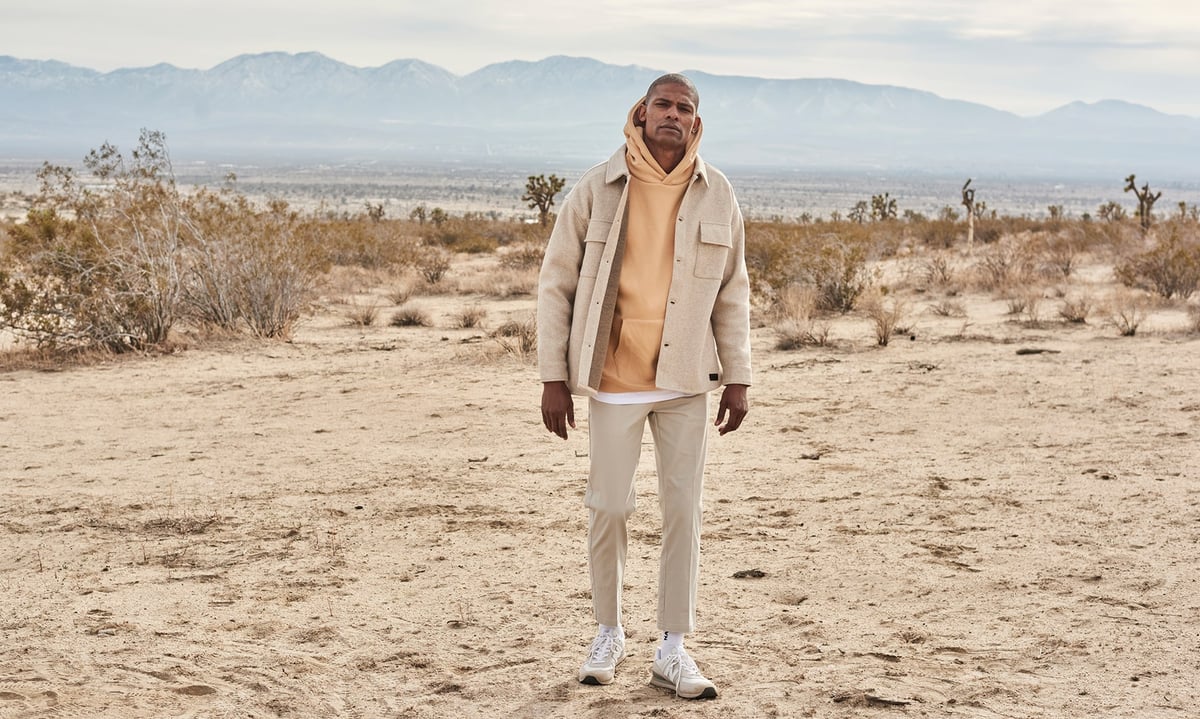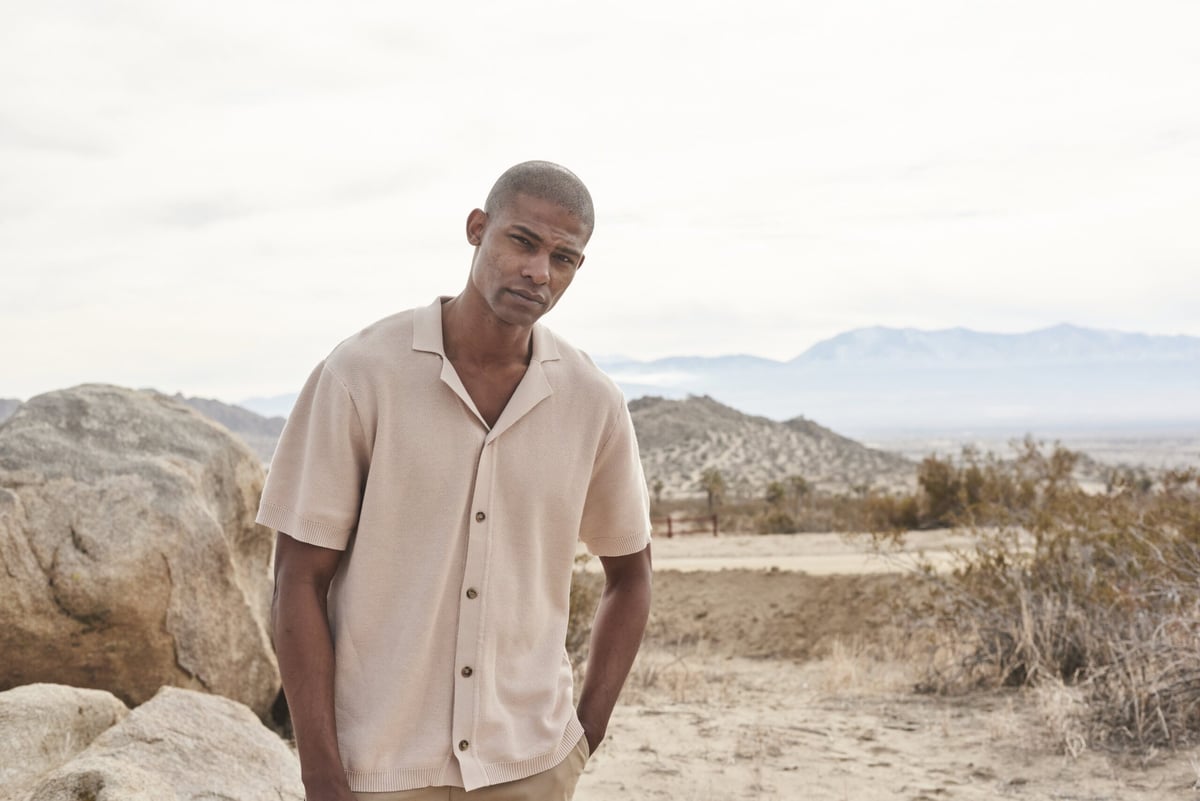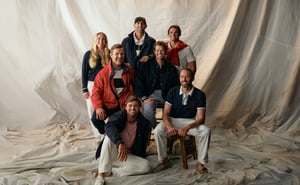At 19, most of us were trying to figure out how to pass first-year uni exams after spending our afternoons at the uni bar. The same can’t be said for Glenn Coleman, who already had bigger ambitions.
Just a year out of high school, Coleman was splitting his time between study and two part-time jobs when he realised there was a gap in the market for premium streetwear. Wanting to offer something more interesting than what was on offer, he birthed the clothing brand, Nana Judy. Fast forward to today, and Nana Judy is a shining example of Australian commercial and design talent on the world stage, with an annual revenue of more than $30 million.
Stocked in the best retailers around the world, exhibited on fashion week runways from Sydney to New York and the name behind some of the most epic festival parties of the last decade, Nana Judy is a rare international brand that remains Australian-owned, with Coleman still in control of the label with 100% ownership. While it’s reached heights that few would dare to dream of, the story of Nana Judy isn’t one that’s widely known.

It was 2006 and Glenn Coleman worked part-time at a local surf shop. He understood the dominance of the typical skate and surf brands across the Australian men’s clothing scene at the time, but he believed men wanted more.
Buoyed by the confidence of what he already knew about the apparel industry, Coleman put the wheels in motion to start his own clothing brand. He sold his car, emptied his savings account and landed on naming the brand after his great-grandmother’s lovable dalmatian. With a loan from the bank secured, Nana Judy was born.
“I remember thinking, “It’s now or never,” because, at that point, I was all in,” Coleman said. “That first year, I was working seven-day weeks and late nights, packing orders and just trying to keep up with the demand.”
Immediately after launching, the first Nana Judy collection sold out everywhere it was stocked. His thesis that Australian men were no longer content with the same basic clothing staples was proven correct, energising him to push harder with Nana Judy.
“Being so young at 19, you can take a lot of risks,” he explains. Coleman was working out of the garage doing all the sales, and in his first year, was able to achieve $2 million in revenue. “I think because I lived and breathed it, I represented it myself and I was so passionate about the brand, the retailers were really receptive.”
“We ended up tripling our warehouse size three times over the first few years,” he said, speaking to the exponential growth of the brand. The company continued its rapid growth and exceeded $10 million in revenue after just a few years.

With young Australian men already loving what Nana Judy had to offer, Coleman set his sights overseas. Navigating the intricacies of international markets, the pressures of trade shows and the logistics of selling to large department store retailers, Coleman started travelling– a lot.
“I was 21 and I started distributing all over Europe. I was spending a lot of time overseas and interestingly, when I hit success over there, demand also increased in Australia.”
With a co-sign from the trend-leading European markets, the growth of Nana Judy only continued to accelerate. “At the time, I was making 15 sample sets for our overseas sales teams, and I was selling to the major retailers in the UK, Italy, Germany, Belgium, Spain, and the Netherlands.
“We were doing trade shows three times a year in Berlin, which really opened my eyes to the world of fashion and just how big it can be,” Coleman recalls. “We were set up next to household names in these trade shows, like Tommy Hilfiger and Adidas. Just seeing their set-ups inspired me to aim big, where they would spend hundreds of thousands on their stand and would have everything from stacked shipping containers to swimming pools.
“It taught me a lot, and shaped where the brand is today.”
With a strong presence established in Europe, Coleman turn his attention to the other side of the Pacific. In 2015, Nana Judy was launched in the US into American Rag and Fred Segal in Los Angles, among other stores. This served as the foundation of the brand’s growth in North America, where it is now stocked in Nordstrom, Nieman Marcus and Bloomingdales.

The highlights were almost coming too quickly to properly celebrate them, but a couple of moments stand out for Coleman as pivotal for Nana Judy. In addition to showing for the first time at Sydney Fashion Week and New York Fashion Week, the scale of the European trade shows also taught Coleman what was possible when it came to working with the world’s biggest celebrities.
“You need to come up with fun and exciting ways to get your brand known, as you don’t have the huge advertising budgets the big brands do,” he explained. Fun and exciting were exactly what Nana Judy did, long before the glut of micro-influencers that dominate festival attendees today, Coleman understood the unique opportunity that such cultural events offered.
He was able to organically create a frenzy of hype and interest in Nana Judy by hosting some of the best events in the business, from Splendor In The Grass to Coachella. Everyone from Rhianna and P-Diddy to Leonardo Di Caprio and Paris Hilton wanted to be seen at the Nana Judy Coachella event.
It wasn’t always smooth sailing for Nana Judy, however, with challenges rearing their heads at every turn. The fashion business is a difficult one, especially for a brand based on the other side of the world from most of the other, more established names in the game.
Despite the ever-present tyranny of distance faced by Coleman, he rode out the frequent storms by taking each flash point as an opportunity to learn from and refine the business.
“One of the toughest lessons happened when we shipped a million-dollar order to a UK distributor just before they went bust,” he recalls. “That was a big lesson, not just losing that amount of money to a distributor we’d been working with successfully for a few years, but how to make sure it didn’t happen again.”
“That’s business, though. It’s not easy, and it taught me in the game of business there are ups and downs, and winning and losing. It really taught me to not have all my eggs in one basket.
“A lot of local brands just either do just online or just focus on Australia, but for me, I really wanted Nana Judy to be on the world stage, which comes with its own specific set of challenges”

Finding success in an industry with so much churn and burn is never straightforward, but Coleman credits his long-term success to even longer-term planning and his objective approach to commercial decision-making.
“One of the most important things is to remove emotion, play the game, and properly treat your brand like a business. When you start a business it’s very easy to become too attached to it, which is why actually stepping back and looking at it objectively is so critical.
“I think looking long-term with all the brand decisions will keep you a step ahead, because setting goals for year one, year three, year five, and beyond is so important to build a road map. Then you can plan how you’re going to get there, but if you’ve got a big vision it’s so important to look long-term.
While many Australian fashion designers have come and gone since Nana Judy was established 17 years ago, Coleman also credits part of the success of his brand to knowing what his customer wants.
“Always put the customer first. It’s what drives the business and sometimes people forget that.”
However, in the early years when you’re still building your core clientele and learning what it is they want from your brand, risk-taking is the next best thing.
“Taking risks early on really helped me. You just have to back yourself in. Business is a game and it’s about winning and losing.”

Success breeds more success and different kinds of opportunities arose as the business continued to grow. One particularly special moment for Coleman was when Disney reached out to explore the possibility of a collaboration with its 101 Dalmatians franchise.
Having named his fledgling fashion label after his grandmother’s dalmatian, nothing could have prepared him at the age of 19 for the fact he would one day collaborate with the world’s most famous spotted dogs. “Disney reached out to us, which was pretty special, as they heard the story of how Nana Judy is named after my great-grandmother’s dalmatian dog.
“We launched that collaboration at New York Fashion Week, and we sold the collection across America, Canada, and Australia.”
While the pandemic years hit every business hard, Nana Judy’s strong presence in the online retail space meant Coleman’s brand endured it without an across-the-board drop in sales. With a strong emphasis on comfortable staples already established, Nana Judy rode the loungewear wave and has bounced back already, enjoying the brand’s biggest-ever week in the lead-up to Christmas in 2022.
The two years of interrupted scheduling and not being able to travel also have Coleman time to reflect on the business he’s built over the last decade and a half, as well as consider what’s next for Nana Judy. He’s also recently welcomed his first child into the world, with his wife Elizabeth Jones who works at Nana Judy as the Head of Design & Production.

“Since the beginning, our mission has been to inspire confidence and be a leader in the men’s streetwear world. Today, we’re committed to creating a legacy for kids and making sure our brand culture is something to be looked up to by future generations”, said Coleman.
“That’s why we’re getting behind mentoring kids, and have a big collaboration dropping nationally in Myer stores with AIME, the Australian Indigenous Mentoring Experience. They support First Nations and marginalised kids in Australia.
“Young people have an incredible future ahead of them, and at this vital stage in their lives, it is essential that they have the right people and access to support networks helping them to succeed.” said Glenn Coleman,
The environmental impact of Nana Judy is also important to Coleman, an area that many fashion labels don’t take seriously at all. “We’re certified carbon neutral,” he confirmed.
“We want to be looked up to as a leader in the industry in this area. Last year, we got consultants in and they measured the footprint of our business, from who we’re working with to the logistics of packaging, electricity, and freight. To be able to be carbon neutral now is great for us, and it’s a good step in the right direction. We’re definitely doing more in that space.”
With the upcoming launch of Nana Judy’s first children’s wear collection and an emphasis on more premium pieces within their core men’s collection, it continues to be a label that can offer men well-made garments no matter their age or stage of life. While Nana Judy has already enjoyed more than a decade and a half both within Australia and on the world stage, Coleman is more energised than ever to keep growing the brand in new directions.
“The next chapter is going to be an exciting one for us. We want to be looked up to in the men’s apparel world as having a positive impact on kids everywhere. That’s where it started when I was a young man, and that brings us to where we are today.”
















